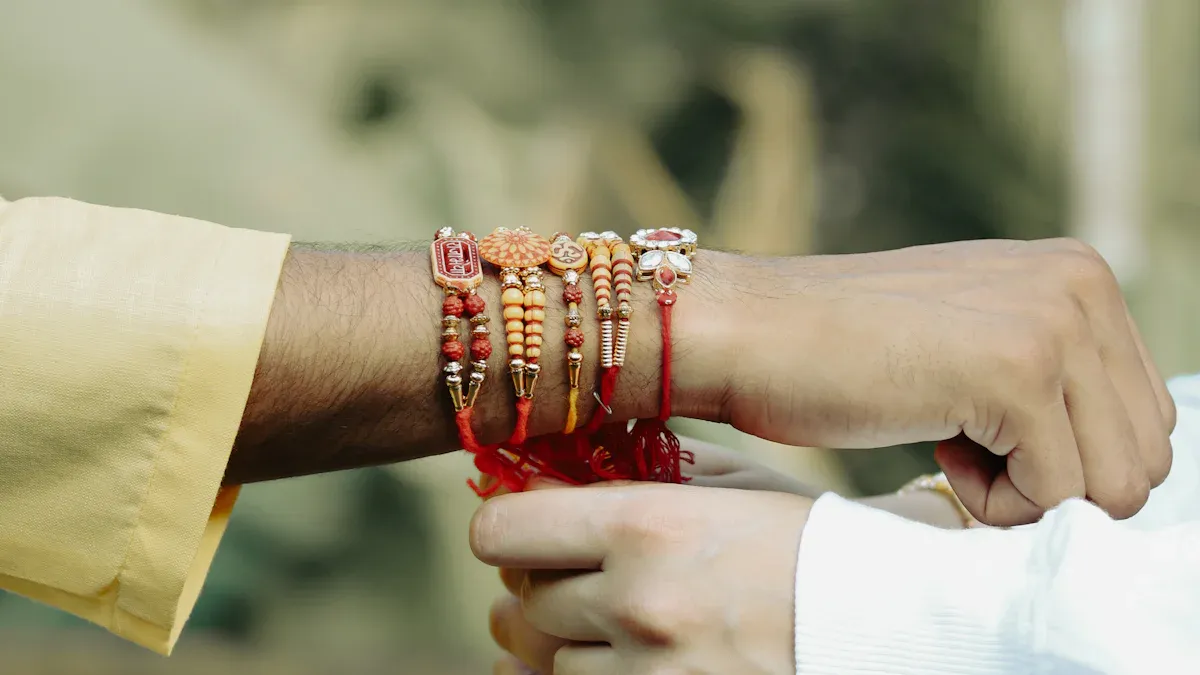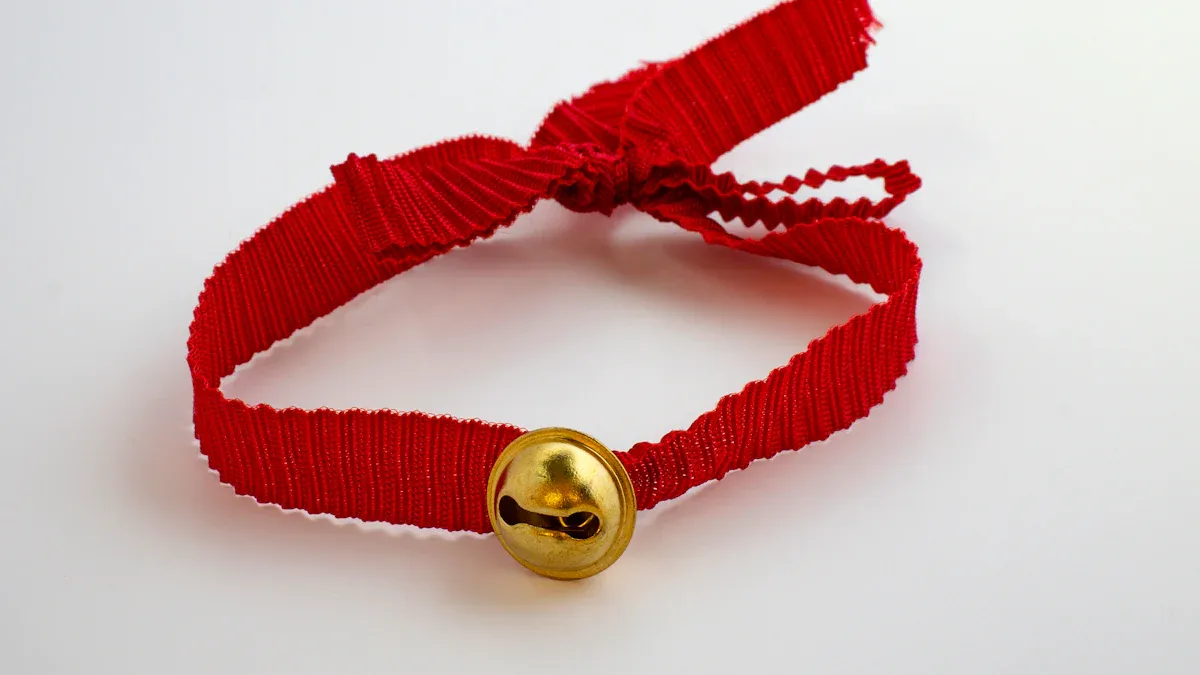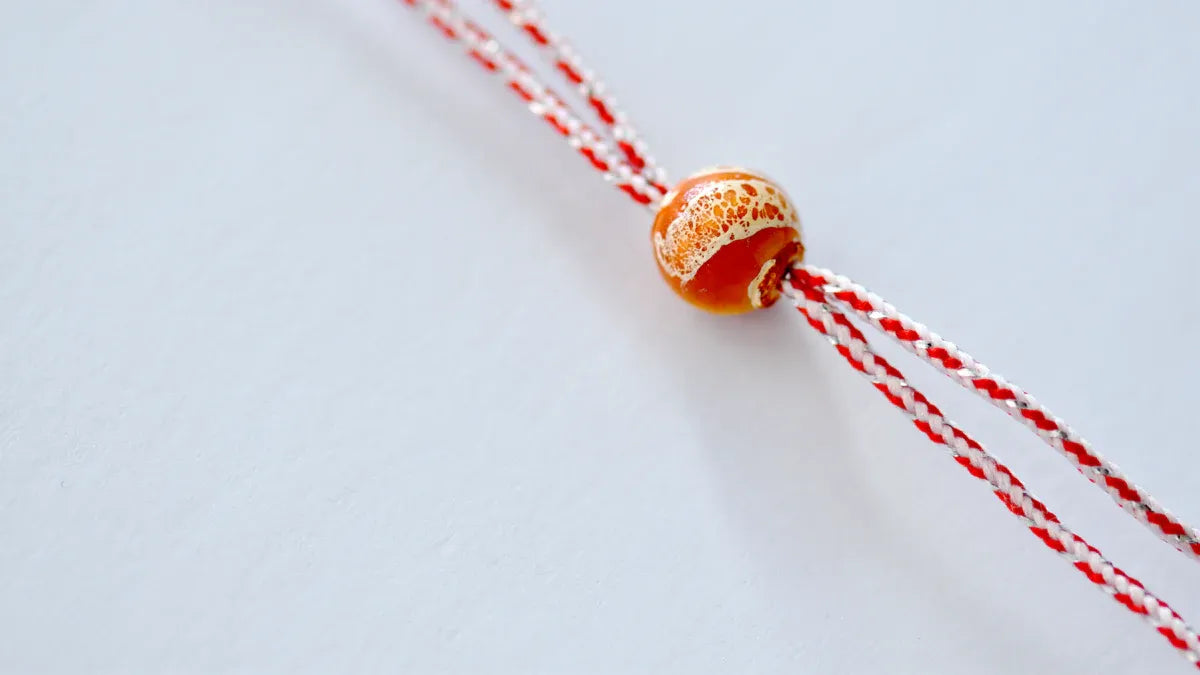Have you ever tied a red ribbon on wrist and wondered why it feels special? People say this simple string brings luck and acts as a symbol of protection. You see red string bracelets everywhere—on friends, in shops, and across cultures. Many believe wearing one boosts positivity and connects you to spiritual well-being. By the way, when someone mentions a red ribbon or red string, they’re talking about the same thing, though most call it a red string.
Key Takeaways
Wearing a red string bracelet shows good luck and safety in many cultures. The red string is usually tied on the left wrist to bring good energy and blessings. Different cultures have their own meanings for the red string, like faith, safety, and connection. Tying the red string at special times can make it more important and help you think about your goals. If your red string bracelet breaks, it might mean it took in bad energy, so you should get a new one to keep the tradition going.
Red Ribbon on Wrist: Origins

Ancient Traditions
When you see a red string bracelet, you might wonder about its history. This tradition started thousands of years ago. Many old societies thought tying a red ribbon or red string on the wrist could keep people safe and bring good luck.
In Jewish tradition, the red string bracelet is connected to Rachel. She is known for her faith and caring nature. People wear it on their left wrist. They hope it gives them good energy and protects them from bad things. This is important in Jewish beliefs about the red string.
In Hinduism, the red string is called 'Kalava' or 'Mauli.' It is used in religious events. It stands for safety and trust. Its meaning can be different in each group.
Ancient Chinese people saw the red string as a sign of fate. It shows how people are linked together. The "red string of fate" story says a red string joins people who should meet, even if they are far apart.
Did you know? Experts found red threads used in old rituals from the Second Temple Period. Old writings say people used red wool to protect mothers giving birth or to stop bad luck.
Cultural Roots
The red string bracelet is not just jewelry. It has deep meaning in every culture that uses it. Some call it a red ribbon, but most say red string because it is found in many traditions.
Culture |
Symbolism |
|---|---|
Chinese |
|
Jewish |
Linked to Rachel, showing faith, safety, and caring mothers. |
Hinduism |
Called 'Kalava' or 'Mauli', means safety, trust, and marriage in different groups. |
You can also see the red string bracelet in Tibetan Buddhism. It helps remind people of their spiritual journey and keeps them safe. In Greece, the "Martis" bracelet uses red and white string to keep away bad spirits in March. Japanese stories talk about the "Red Thread of Fate." It ties together people who are meant to meet, especially couples.
No matter where you look, the red string bracelet is a sign of luck, love, and safety. Whether you call it a red ribbon or a red string, you join a tradition that links you to people from many places and times.
Spiritual Significance
Protection and Blessings
When you tie a red string or red ribbon on your wrist, it is more than just a thread. It stands for protection and has a deep spiritual meaning. People in many cultures think this string keeps away bad energy and harm. The bright red color means strength and life. It helps you feel safe and brave each day.
Most people wear the red string on their left wrist. This side is believed to take in good energy. Wearing it here lets blessings and good energy come into your life. The red string is often tied during special events. People say prayers or wishes when they tie it. These wishes can be for health, happiness, or doing well in school or work. Tying the string is a way to protect yourself and connect your hopes to something bigger.
Many spiritual leaders say the red string helps you remember your beliefs. It keeps you thinking about your goals and the good things you want in life.
In some groups, monks or spiritual guides bless the red string. This makes the string a special item filled with protective power. In Buddhism, the red string stands for kindness, love, and wisdom. Monks bless the string in ceremonies, making it a lucky charm for safety and good luck.
Here’s a quick look at what people believe the red string brings:
Blessing Type |
How the Red String Helps |
|---|---|
Protection |
Keeps away bad energy and the evil eye |
Good Luck |
Brings good things and new chances |
Health |
Helps you stay healthy and strong |
Love & Connection |
Makes family and friend bonds stronger |
Many people tell stories about their red string breaking during hard times. They think this means the string took in bad energy and kept them safe. Wearing this special string can help you feel calm and in control, especially when life is hard.
Connection to Faith
The red string means more than just protection. It also links you to your faith and family traditions. No matter if you call it a red ribbon or red string, you join a practice shared by people everywhere.
Different religions use the red string in their own ways, but the meaning is close. In Hinduism, the red string is called "Kalava" and is tied during rituals for blessings and to show faith. In Kabbalah, a type of Jewish mysticism, the red string is linked to Rachel, who is known for her kindness. People believe the string keeps away the evil eye and helps them stay close to their faith.
Here’s a table showing how different cultures use the red string to connect with faith:
Culture/Tradition |
How the Red String Connects You to Faith |
|---|---|
Chinese |
Shows the red string of fate, linking soulmates and destiny |
Hinduism |
"Kalava" stands for blessings and safety during rituals |
Kabbalah |
Protects from bad energy, tied to Rachel’s story |
Greek |
"Martis" welcomes spring and keeps away bad spirits |
Latin American |
Protects babies from the "Mal de Ojo" (evil eye) |
Tibetan |
Blessed cords called "Dorje" give spiritual safety |
Japanese |
"Akai Ito" is the hidden thread joining people meant to meet |
When you wear a red string, you carry the wishes of the person who gave it to you. Sometimes, someone you care about ties it on your wrist and fills it with their hopes for you. This makes the red string more than just jewelry—it becomes a sign of love, connection, and shared beliefs.
Wearing a red string can help you remember your own wishes and keep you focused on your dreams. It can remind you every day to stay true to your values and trust in the meaning of this old tradition. The red string, or red ribbon, is a sign that you are not alone. It connects you to a long history of faith, hope, and good energy.
Red String Bracelets in Modern Life
Rituals and Practices
Red string bracelets are very popular now. People wear them for style and for deeper reasons. When you put on a red string bracelet, you join an old tradition. Some people call it a red ribbon, but most say red string because everyone knows it.
Many new rituals still use old customs. You might wear your red string bracelet on your left wrist. People think this stops bad energy and keeps you safe. Here are some things people do:
Tie the bracelet during a special time or prayer.
Wear it on your left wrist to block bad vibes.
Use the red color to feel brave and strong.
The red string bracelet is more than just fashion. In Hinduism, priests tie red thread bracelets for blessings and strength. Tibetan Buddhists bless the red string in rituals for lessons and protection. Families today use red string bracelets to help each other and keep good energy close.
Tradition |
Ritual Description |
Purpose |
|---|---|---|
Tibetan Buddhism |
Lama blesses and ties the red string bracelet during ceremonies. |
Protection and spiritual lessons. |
Hinduism |
Priest ties red thread bracelets during religious events. |
Blessings and spiritual strength. |
General Spirituality |
You wear the red string bracelet on your left wrist. |
Blocks negative energy and supports aura. |
If you want to wear a red string bracelet, remember these steps: tie it with care, wear it on your left wrist, and let it remind you of your goals.
KarmaBless Jewelry
KarmaBless brings old traditions into your daily life. When you pick a red string bracelet from KarmaBless, you get more than just jewelry. Each bracelet uses natural materials like wool, silk, or cotton. Some have beads made from jade, amethyst, or wood. These stones connect you to the five elements—Wood, Fire, Earth, Metal, and Water.
KarmaBless makes red string bracelets with care. You can add charms that mean something special, like hearts for love or stars for guidance. Some bracelets use the seven-knot ritual, with each knot for a wish or hope.
KarmaBless helps you with great customer service. You get free shipping if you spend over $49 and easy ways to pay. The brand cares about nature and helps you find balance in life.
Wearing red string bracelets today keeps old beliefs alive. You might feel your mood or luck change. Many people say the red string bracelet helps them feel calm and focused. One person said, "I did not believe it at first, but after wearing my red string bracelet during a hard time at work, I felt calmer, more focused, and even luckier."
If you want to wear a red string bracelet, KarmaBless makes it simple. Pick your favorite style, tie it with care, and let it help you feel better. The red string bracelet is an easy way to bring tradition, safety, and change into your life.
Why the Red Ribbon Remains a Symbol of Good Luck

Enduring Beliefs
You may ask why the red ribbon on wrist is still important. The reason goes back many years. People from different places have trusted this string for good luck and safety. Wearing a red ribbon on wrist means you join an old tradition. Most people now call it a red string, but both names mean the same thing. The word "red string" is used the most.
The red string is linked to Rachel, who stands for caring and new life. This shows it has a long history.
In the 1800s, people went to Rachel’s tomb for blessings. This kept the tradition going.
In the 1900s, women put red strings around Rachel’s tomb. You can still see this today.
Famous people like Madonna wear the red string. This makes it popular and shows it lasts.
You can see the red ribbon on wrist in many places. It is a sign of hope, safety, and good luck. People think it brings luck, keeps away bad things, and helps you stay positive. The meaning has changed over time. Today, the red ribbon on wrist also helps health causes and shows people working together.
Here’s a quick look at how beliefs have changed:
Aspect |
Historical Beliefs |
Contemporary Beliefs |
|---|---|---|
Symbolism |
Showed status and loyalty |
|
Visibility |
Seen in certain cultures |
Seen more in the 1990s, now less than pink ribbon |
Additional Meanings |
N/A |
Heart health awareness, stands against drug abuse |
Personal Stories
You might hear stories about the red ribbon on wrist that show its meaning. One family in Latin America gives a red string bracelet to each new member. Their Nana brought it from Panama, and it became a sign of love, safety, and faith. The bracelet is more than luck—it links family members and keeps their dreams alive.
People from many backgrounds share how the red ribbon on wrist helps them:
In Buddhism, the red string reminds you to be kind and brave. It helps you think positive thoughts every day.
In Hinduism, the red string, called 'kautuka', brings people together and shows faith during special times.
In Jewish tradition, the red thread keeps away the Evil Eye and makes your faith stronger.
In Chinese culture, the red string brings good luck and energy, filling your life with hope.
Tibetan Buddhists believe the red string holds special energy, giving you safety and luck.
When you tie a red ribbon on wrist, you show love for yourself or someone else. You welcome hope, safety, and good luck into your life. The red string is more than a sign—it’s a tradition that brings people together and helps you feel close to others.
Now you understand why the red string, sometimes called a red ribbon, is lucky. This small bracelet means you are safe and can celebrate good things. People everywhere use it to show they care and stand together.
Positive Outcome |
Description |
|---|---|
Protection |
Keeps you safe from harm and bad things. |
Good Luck |
Brings you chances for new things. |
Celebration |
Shows happy times and success. |
KarmaBless lets you learn about this old tradition with bracelets that help you think and grow. When you wear your red string, you join people from all over the world and respect old ideas. Enjoy your journey and let your bracelet help you remember your own story.
FAQ
What does the red string bracelet mean?
You wear a red string bracelet for good luck and protection. People in many cultures believe it brings positive energy. When someone says "red ribbon," they mean the same thing, but "red string" is the name most people use.
Can anyone wear a red string bracelet?
Yes, you can wear a red string bracelet no matter your age or background. People from all walks of life use it for luck, safety, and spiritual connection. You do not need to follow a specific religion.
How should I wear my red string bracelet?
Most people tie the red string on their left wrist. This side is thought to attract good energy. You can make a wish or say a prayer when you put it on. Remember, "red ribbon" and "red string" are the same thing.
What should I do if my red string bracelet breaks?
If your red string bracelet breaks, many believe it has absorbed negative energy. You can thank it for its protection and replace it with a new one. This keeps the tradition and good luck going.
Is there a difference between a red ribbon and a red string bracelet?
No, there is no real difference. Both terms describe the same lucky bracelet. People use "red string" more often because it is the universal name in most traditions.










